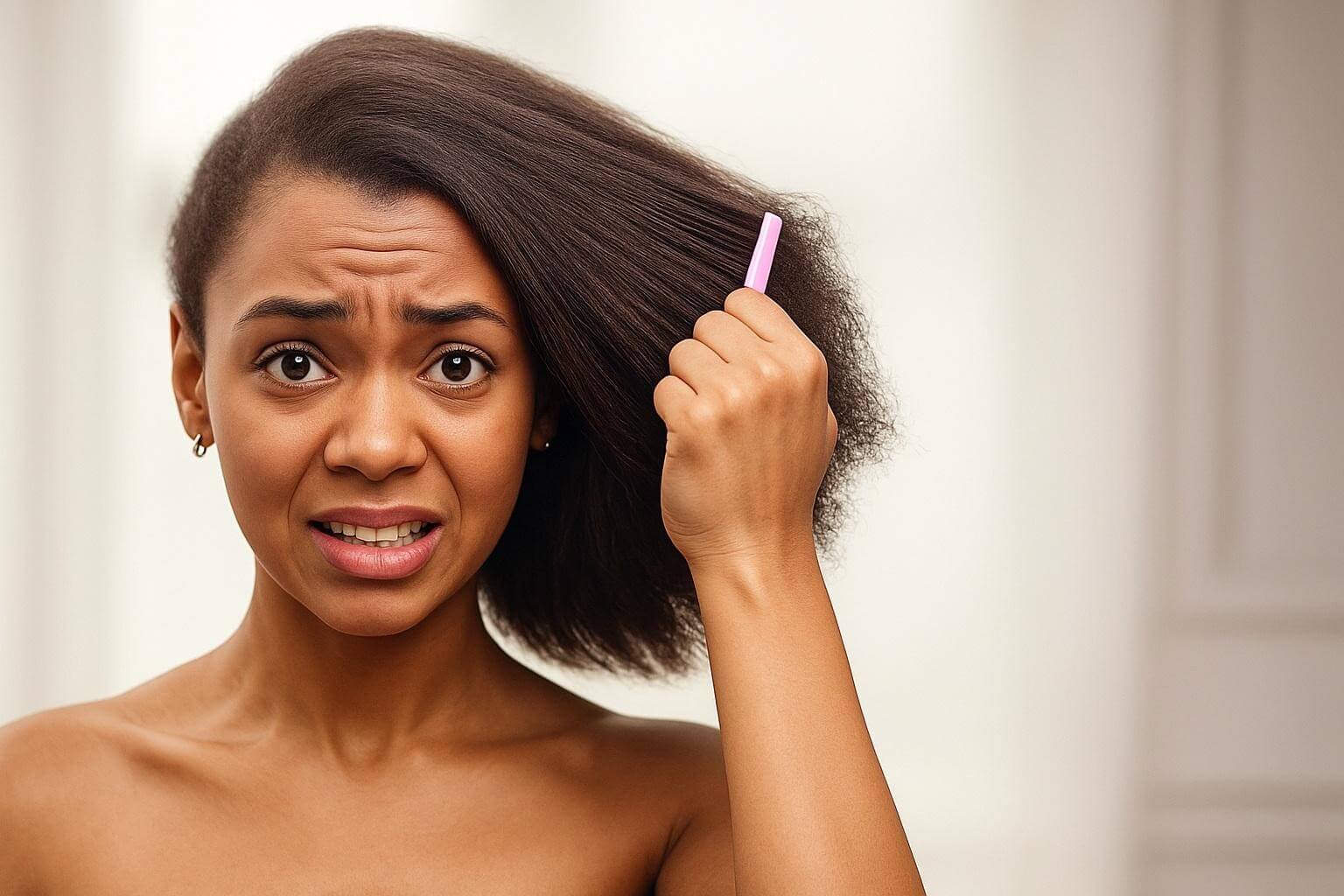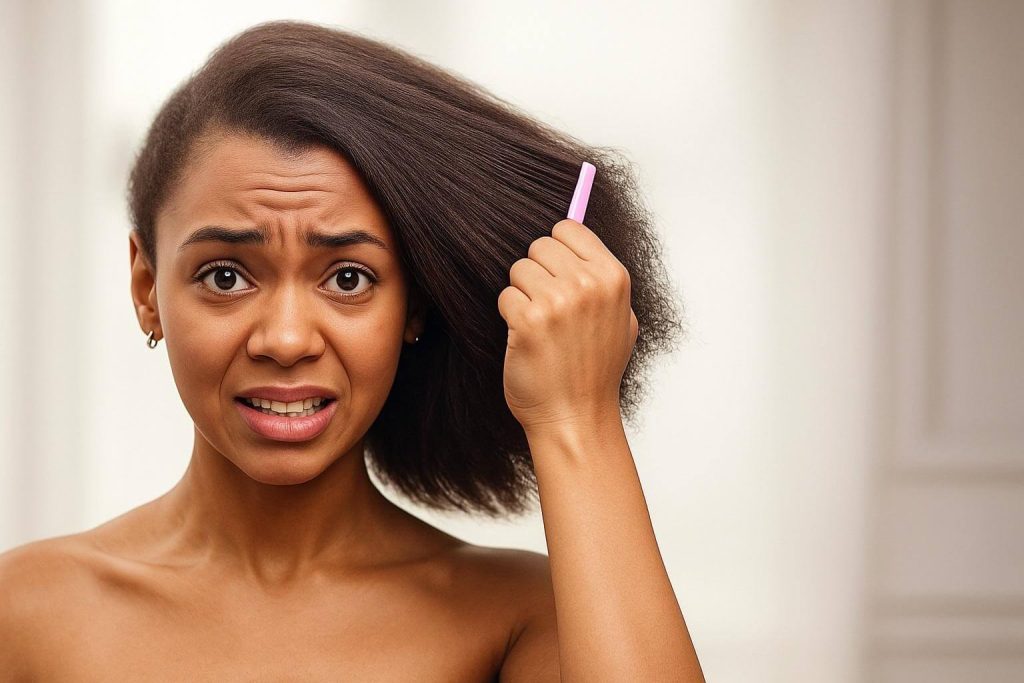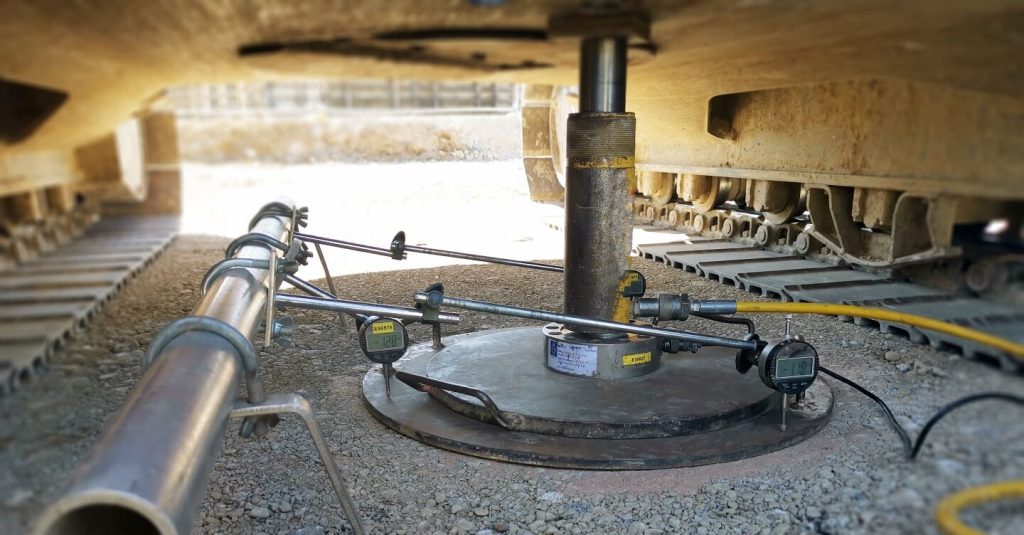Scalp & Follicle Rescue: Reviving Growth in Textured Hair After Relaxer Damage

Chemical relaxers have long been part of many textured-hair routines, offering that sleek, straight look with reduced frizz and tangles. However, the repeated use of these products often comes at a cost—scalp irritation, weakened follicles, and stunted growth. This article is a friendly yet research-based guide for anyone who has chemically straightened their hair and is now struggling with breakage, thinning, or a lack of volume. Whether you’re transitioning away from relaxers or simply seeking to restore vitality to your mane, understanding the science behind relaxer damage and recovery will help you make smarter choices for lasting growth and scalp health.
Straight Hair Extensions and Follicle Recovery
When it comes to textured hair—especially tightly coiled or kinky strands—the follicle naturally grows in a curved shape. This curvature creates that signature body and movement, but it also makes the hair more fragile when exposed to chemical relaxers. Over time, repeated straightening weakens the strand’s inner bonds and can leave the scalp irritated or inflamed. Many women transitioning from chemical treatments find that blending their natural tresses with Relaxed Straight Hair Extensions helps maintain a sleek, polished look while allowing the follicles to rest and repair. By easing daily manipulation, these extensions support the scalp’s recovery process and help preserve the hair’s natural strength during regrowth.
As the scalp heals, focusing on moisture balance and gentle care becomes essential. Avoiding tight styles, excessive heat, or overlapping chemical treatments gives the follicles a chance to regain their natural rhythm, encouraging thicker, healthier growth over time. Regular deep conditioning with nourishing ingredients like shea butter, avocado oil, or hydrolyzed protein helps rebuild elasticity and reduce brittleness. It’s also helpful to massage the scalp two to three times a week with lightweight oils such as jojoba or castor oil to boost circulation and stimulate new growth.
Straight Sew-In Weave and the Role of Scalp Health
Healthy growth starts at the scalp. After consistent chemical treatments, the scalp’s pH balance can become disrupted, leading to irritation, burns, and chronic inflammation. These conditions reduce the scalp’s ability to nourish hair follicles, affecting overall density and growth potential. Restoring this balance involves gentle cleansing, deep conditioning, and stimulating blood flow through scalp massages or herbal oil treatments such as peppermint, rosemary, or tea tree oil.
Once the scalp is calm and the follicles begin to recover, low-manipulation styles become crucial for maintaining progress. Here’s where a Relaxed Straight Sew-In Weave can play a major role. It allows you to keep a polished, straight look while letting your natural tresses rest beneath the weave. The style also minimizes daily handling and protects the new growth from harsh weather or over-styling. The key is ensuring proper installation and taking breaks between sew-ins to keep the scalp breathable and prevent traction alopecia.
To further support scalp recovery, it’s helpful to:
- Avoid overlapping relaxer applications on previously treated hair.
- Use sulfate-free, moisturizing shampoos to maintain hydration.
- Incorporate weekly scalp exfoliation to remove product buildup and dead skin cells.
Nutritional and Treatment Support for Healthy Growth
Reviving growth after relaxer damage isn’t just about topical care—it starts from within. Follicles depend on a steady supply of nutrients, proteins, and healthy fats to rebuild strength. A balanced diet rich in vitamins A, C, D, E, zinc, and biotin supports stronger, more resilient tresses. Protein is particularly vital, as it helps repair keratin bonds weakened by chemical straighteners.
Alongside diet, topical protein and moisture treatments can make a remarkable difference. Alternate between moisture-rich deep conditioners and light protein masks every other week to maintain elasticity and prevent brittleness. Hydration keeps the mane supple, while protein fortifies the strand’s inner structure.
Timing between relaxer sessions also matters significantly. Experts suggest waiting a minimum of 10–12 weeks between treatments to allow new growth to strengthen before another chemical process. This approach reduces overlapping and breakage, allowing your mane to thrive even if you choose to continue relaxing your hair.
Bullet-point routine suggestions for recovery:
- Every wash: Use moisturizing shampoo and conditioner.
- Weekly: Apply scalp oil massage to stimulate blood flow.
- Bi-weekly: Use deep conditioning masks.
- Monthly: Trim split ends to maintain healthy growth.
Knowing When to Seek Professional Help
While home care can go a long way, there are times when professional intervention is essential. If you notice sudden, patchy hair loss, scabs, or persistent inflammation, it’s time to consult a trichologist or dermatologist. These specialists can diagnose underlying scalp conditions such as relaxer-induced alopecia, fungal infections, or contact dermatitis that may be impeding growth.
A trichologist can also recommend medical-grade treatments like topical minoxidil, corticosteroid injections, or platelet-rich plasma (PRP) therapy, depending on the severity of follicle damage. Early intervention ensures that dormant follicles are revived before permanent scarring occurs.
Professionals can also help create a personalized regimen that combines nutrition, scalp therapy, and protective styling to maximize regrowth. If you’re unsure whether what you’re experiencing is normal post-relaxer shedding or something more serious, seeking expert advice early can save you years of trial and error.
FAQs: Your Post-Relaxer Growth Questions Answered
Q1: Can chemically relaxed hair ever return to its natural texture?
No, once hair is chemically straightened, its internal bonds are permanently altered. However, new growth will always emerge in your natural texture.
Q2: How can I tell if my scalp has been damaged by relaxers?
Look for symptoms such as burning, flaking, sores, or tenderness. Persistent irritation suggests chemical imbalance or follicle inflammation.
Q3: What’s the best oil for recovering scalp health after relaxers?
Natural oils like jojoba, castor, and peppermint help nourish the scalp, balance sebum levels, and stimulate circulation for healthier growth.
Q4: How long does it take to notice regrowth after stopping relaxers?
On average, with consistent care, you may see noticeable improvement in 8–12 weeks. However, full density recovery can take 6–12 months depending on the extent of damage.
Q5: Can protective styles like sew-ins cause more harm than good?
Only if installed too tightly or worn for prolonged periods. Allow your scalp to rest between installs and always ensure the weave is clean and dry underneath.
Final Thoughts
Rebuilding your tresses after chemical relaxer damage takes time, patience, and mindful care. By focusing on scalp health, balanced nutrition, and low-manipulation styling options like relaxed straight hair extensions or a relaxed straight sew-in weave, you can restore your mane’s strength, shine, and fullness. Think of recovery not as starting over—but as starting smarter, with a deeper understanding of what your hair truly needs to thrive.
- Hello Services – Professional Cleaning and Property Services Across the UK
 When it comes to maintaining a clean, safe, and well-managed property, choosing a reliable service… Read more: Hello Services – Professional Cleaning and Property Services Across the UK
When it comes to maintaining a clean, safe, and well-managed property, choosing a reliable service… Read more: Hello Services – Professional Cleaning and Property Services Across the UK - Why Should You Choose Vela One for Your Next Home or Investment?
 If you’re considering investing in Singapore’s luxury real estate or are looking for a new… Read more: Why Should You Choose Vela One for Your Next Home or Investment?
If you’re considering investing in Singapore’s luxury real estate or are looking for a new… Read more: Why Should You Choose Vela One for Your Next Home or Investment? - Sustainable HVAC & Building Upgrades: How to Reduce Energy Bills and Carbon Footprint in Commercial BuildingsEnergy efficiency has become one of the most important priorities for UK businesses. Rising utility… Read more: Sustainable HVAC & Building Upgrades: How to Reduce Energy Bills and Carbon Footprint in Commercial Buildings
- Wellness and Recreational Facilities at Lentor Gardens Residences
 Introduction: Living a Balanced Lifestyle Lentor Gardens Residences is designed to promote a holistic lifestyle… Read more: Wellness and Recreational Facilities at Lentor Gardens Residences
Introduction: Living a Balanced Lifestyle Lentor Gardens Residences is designed to promote a holistic lifestyle… Read more: Wellness and Recreational Facilities at Lentor Gardens Residences - How We Made Our House Extension Eco-Friendly
 When we decided to add a garden room extension last year, I knew from the… Read more: How We Made Our House Extension Eco-Friendly
When we decided to add a garden room extension last year, I knew from the… Read more: How We Made Our House Extension Eco-Friendly

Sustainable HVAC & Building Upgrades: How to Reduce Energy Bills and Carbon Footprint in Commercial Buildings

Scalp & Follicle Rescue: Reviving Growth in Textured Hair After Relaxer Damage

Why Custom Lift Kits Are the Key to Better Ground Clearance

CBR Testing: The Gold Standard for Pavement Design and Road Construction

Hello Services – Professional Cleaning and Property Services Across the UK

Sustainable HVAC & Building Upgrades: How to Reduce Energy Bills and Carbon Footprint in Commercial Buildings

Wellness and Recreational Facilities at Lentor Gardens Residences

